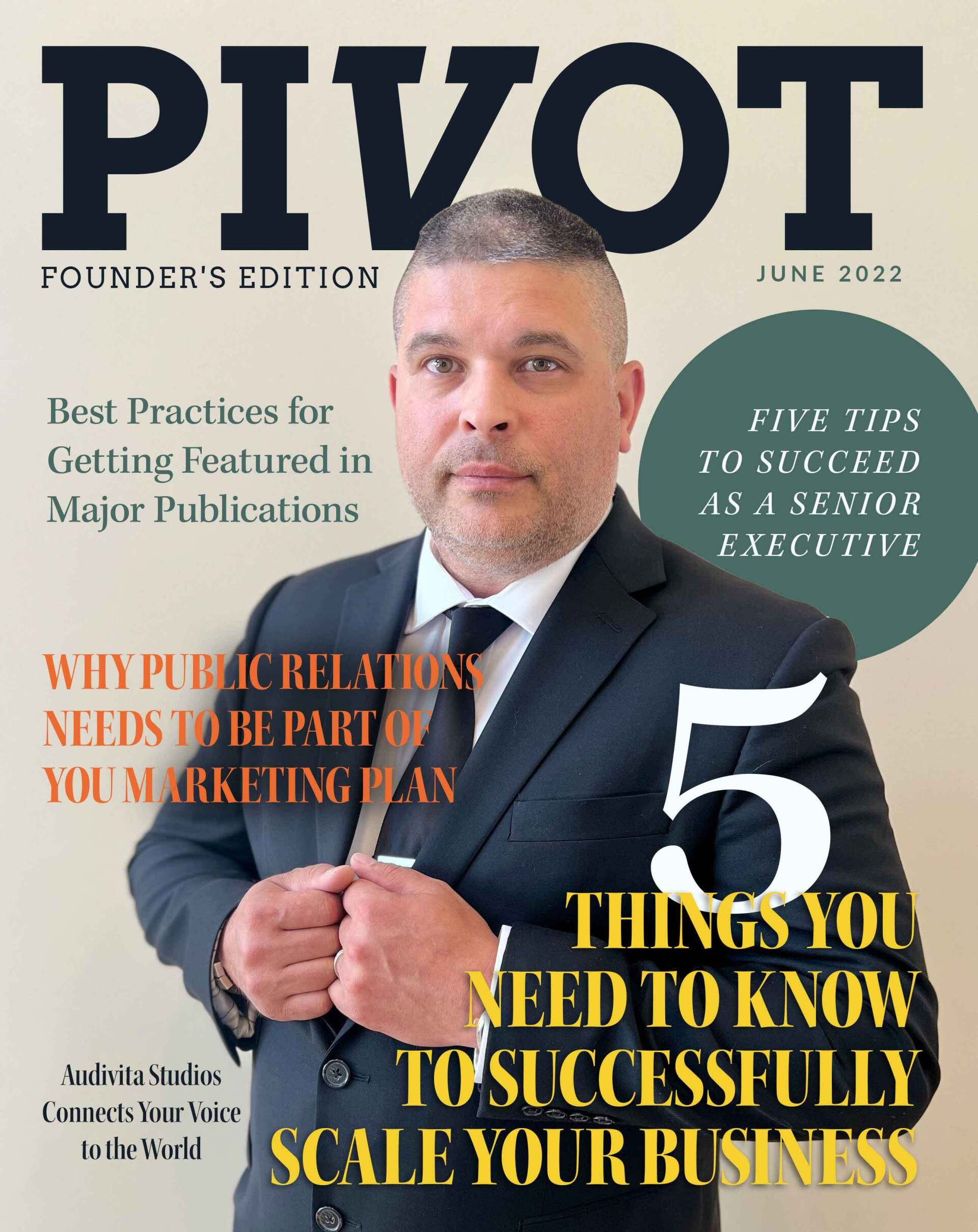Long ago, a business executive famously said, “Half of all of the money I spend on advertising is wasted. I just don’t know which half.” This quote is often credited to marketing pioneer and retail magnate John Wanamaker. Others claim it was first said by William Hesketh Lever, a British industrialist who was the first to commercially turn vegetable oil into soap, the basis for the success of the Lever Brothers company, now Unilever, a $115 billion multinational.
The Power of PR
By the same token, business owners and executives interested in gaining the best ROI possible are committing a similar degree of fiscal malfeasance if they don’t include public relations in the mix of their marketing efforts.
You might ask, “Why should public relations be an essential element of any cost-effective and comprehensive marketing-communications plan?” The reasons are so compelling that it’s perplexing that so many entrepreneurs and executives have what I call a “PR blind spot.” Let’s start with a definition of what public relations actually is and why it can be so powerful.
The Public Relations Society of America, the largest industry association for PR professionals, defines it as a process of “strategic communication which builds mutually beneficial relationships between organizations and their publics.” What exactly does that mean and how does this process work?
In contrast to paid advertising which buys time, space or pixels on a content platform (newspaper, magazine, airwaves, website, streaming service) to transmit a message to consumers on a content platform, the process of running a PR campaign is quite different. For starters, the primary goal is to accomplish the same thing as advertising, but without paying. In other words, instead of purchasing access to an audience, public relations professionals create an incentive for the same platforms to provide editorial coverage at no cost.
That incentive takes the form of a newsworthy pitch. When it works, it can deliver hundreds of thousands or even millions of dollars of free marketing in the form of zero-cost impressions with a local, regional, or national audience. Once a business owner or marketing executive thinks of it that way, it becomes a highly compelling proposition. After all, why pay for something you can get for free?
Content is king. Newsworthy content gets covered.
Professionals working in the field of journalism take their jobs very seriously. Most are college or university educated. Many are exceedingly worldly and have traveled extensively. As practitioners of an honorable profession, they take pride in what they do and want to do their jobs well. There’s even a Journalist’s Creed which spells out the responsibilities and ethics which should be observed to ensure the public interest is well served. They were written in 1914 by Walter Williams, the founding dean of the Missouri School of Journalism and have been published in over 100 languages.
Here are a few of the eight principles it advocates:
- I believe that the public journal is a public trust; that all connected with it are, to the full measure of their responsibility, trustees for the public; that acceptance of a lesser service than the public service is betrayal of this trust.
- I believe that clear thinking and clear statements, accuracy and fairness are fundamental to good journalism.
- I believe that a journalist should write only what he holds in his heart to be true.
- I believe that suppression of the news, for any consideration other than the welfare of society, is indefensible.
You can read the rest of the principles
here.
1. Creating news content is expensive, so provide it to them!
A leading daily newspaper in a major metropolitan market might have dozens or even hundreds of employees in the newsroom. Editors, reporters, news desk managers and other contributors can cost millions annually in payroll. Due to the emergence of the Internet, the way people get their local and national news has changed radically. Every newspaper in the world has experienced a precipitous drop in their subscriber base, resulting in layoffs and a reliance on freelance reporters and writers. Therefore, smaller staffs mean a bigger reliance on story ideas and content from public relations agencies.
2. Interesting news stories drive readership
The fact is, publishers need content! If your in-house publicist or public relations agency can provide high quality, newsworthy stories about your business, it will likely be reviewed for potential assignment to a reporter. To make the pitch even more compelling, consider offering your news item as a scoop, which means you’re only making it available to the chosen news outlet as an exclusive. Beating competing news organizations is a competitive advantage and draws eyeballs. Over time, this builds the audience which in turn drives advertising revenue, the lifeblood of print, broadcast, web, and streaming news services.
3. Virtually any product, service or company has a newsworthy angle if you seek it out
There’s an old expression in the newspaper industry about what is newsworthy and what is not.
A dog bites a man. That’s not news. But if a man bites a dog—now that’s news!
The point is, even if you have the mistaken belief that your story, whether it be your personal entrepreneurial journey or the business you’re building, isn’t newsworthy—well, you’re right if you approach PR from that perspective. On the other hand, by working with a PR pro, you’ll not only uncover some compelling, newsworthy angles together which exist in your business already, you’ll both come up with entirely new ideas which make your story worth covering.
It must be true
Deceptive or non-factual pitches fall apart quickly under scrutin y and then you’ve lost all credibility.
It must be interesting
Put yourself in the journalist’s shoes. Is your story worth covering because it’s something the average person would not be aware of up until they see the story? Is the topic unusual or offbeat? Finding the best, most compelling aspect is the job of your PR agency. That’s what they do!
It must have a point
People today are busy, distracted, and often juggling several tasks at once. If they have the news on the TV or radio, it’s probably background noise. When they see something on a website, their eyes will glance over the headline of an article and then scroll down or click away.
To be an attention-grabber, your story first has to gain the interest of an editor or reporter before you even get a shot at a reader or viewer.
Everyone in the media is trying to build an audience. When a news item comes along which includes a human interest angle, useful information, or something which offers ‘takeaway’ value, journalists take notice because it has the potential to deliver value to the public.
Convinced PR is something you simply must do from now on? Great! Here’s the sequence of steps you’ll be walked through by your publicist:
First, they’ll want to analyze your goals
Do you want to elevate the profile of your company, position yourself as a voice of authority, raise awareness of a new product line or service, publicize a worthwhile cause which will make the world a better place? Each of these are common objectives and fully achievable if you’re in the capable hands of an experienced PR pro.
Next, they’ll help you find the newsworthy angle
As we discussed earlier, everyone has a story to tell, just as each company has a unique perspective and something of value to tell anyone listening. A solid PR strategy will identify several newsworthy angles for your business and then roll them out over time. I usually recommend ongoing pitching to the news media continually while issuing one news release via a wire service and a guest article as often as is feasible.
The other factor to have your PR agency prepare your content is the volume needed for a successful campaign. The likelihood is you’re simply too busy to produce 10 to 12 news releases and articles annually, not to mention guest columns, interview scripts, and other materials essential to telling your story and creating an ongoing narrative in the news.
They’ll identify interview subjects
The most effective public relations programs
don’t rely only on statements just from you and your spokesperson (if you have one). Well-written and compelling news releases include quotes from others, usually industry thought leaders, experts from trade associations and academia, and anyone with relevance and credibility to support the main news theme of your content. Customer testimonials can be effective, too. However, because PR avoids self-promotional statements and tone, those advocating your value statements must be doing so in a manner suitable for a news report.
To gain coverage, they’ll pitch the story
The best news story of the century is useless unless it gets reported. The pitching process and landing placement is where insisting on high quality content pays off. Even highly newsworthy and expertly prepared pitches are ignored or turned down by most editors and reporters. Your PR agency will already have contacts in the news business and a massive media database such as Cision. Also, the professionals on staff will be highly knowledgeable in how to craft email pitches and other tactics to ensure your story is noticed, and perhaps even read fully. They also will leverage resources such as HARO (Help A Reporter Out), Quoted, and other channels used by reporters and freelance writers to find people to quote on various topics.
As is true in sales, pitching is a numbers game. Getting one recipient of your pitch in 10 to say “maybe” is an excellent batting average. It often takes hundreds of emails and Twitter messages and dozens of phone calls to garner just two or three uses of your story. However, if the one you impress and get a “yes” form is Forbes, Bloomberg, the Wall Street Journal, TechCrunch, a major news program, or the New York Times, that’s all it takes to realize serious ROI for your PR budget.
Follow through on the pick up
Once an editor or reporter has indicated they want to run with your story, the job of the PR expert you’re working with is not over. It’s up to them to provide exactly what the newsperson wants to write and then publish the news item. Access to interview subjects, high resolution photos, videos, sometimes a product sample, or a telephone call or a screen sharing session to gather more information. Oftentimes the reporter is on a deadline, so promptly responding to their requests is crucial. Being forthright and candid in every way is key to earning the trust of those providing coverage and getting over the goal line. It’s not unusual for a news outlet to do a follow-up story down the road, so exhibiting professionalism in every way pays big dividends now and in the future.
What’s next? At this point you’ll be enjoying seeing your name and company in the news and, hopefully, reviewing your Google metrics to measure the big jump in traffic to your website and the resulting impact in your sales figures. Keep in mind, however, that successful PR programs don’t end with a few placements. To maximize the benefit of including public relations in your marketing efforts, you’ll want to continue the process, month after month and indefinitely as long as you see the upside you expect.

















